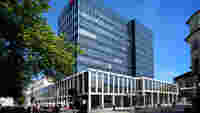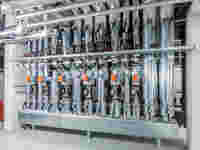Thanks to Intelligent Climate Control Technology, the Kreissparkasse Bank in Göppingen, Baden-Württemberg, Is Awarded Gold Certification by the German Sustainable Building Council (DGNB)

The term “sustainability” is often overused; however, the Kreissparkasse bank in Göppingen, Germany has impressively demonstrated its commitment to sustainability throughout the course of its construction project. The environment, employees and customers all benefit from the results of the new construction and renovation, which combine energy efficiency with comfort. The German Sustainable Building Council (DGNB) awarded the new construction a gold medal for consistent execution of a green building design. The renovated building, constructed in 1974, earned a silver medal. In addition to design and architecture, intelligent climate control technology via WAGO’s state-of-the-art controllers is a key component of this picture-perfect building complex. Additionally, the optimized, energy-efficient construction benefited from the use of an extensive amount of comprehensive academic research.
The renovation and new construction of the Kreissparkasse bank was a complex undertaking and represents a milestone for the city of Göppingen. For many years, the bank’s employees were scattered across five locations. Today, they work in one location that spans an entire city block; the old building, constructed in 1974, was integrated into the project as a new wing. The double facades of the new ensemble, located on the Marktstraße, have a timelessly modern and functional appearance. The office and conference rooms are open and configured to facilitate communication; numerous gathering points and multi-purpose areas foster discussion among the employees. The customer center conveys a friendly and service-oriented atmosphere. Particularly surprising and eye-catching is artist Fritz Schwegler’s oversized “Hirsch mit dem roten Schal” [deer with the red scarf], which is displayed in the interior courtyard.
Kreissparkasse Bank in Göppingen:
- Researchers on Site
- Communication on the Highest Level
- Cool in the Summer, Warm in the Winter
- Energy-Optimized Construction
The Highest Demands of State-of-the-Art Building Automation
